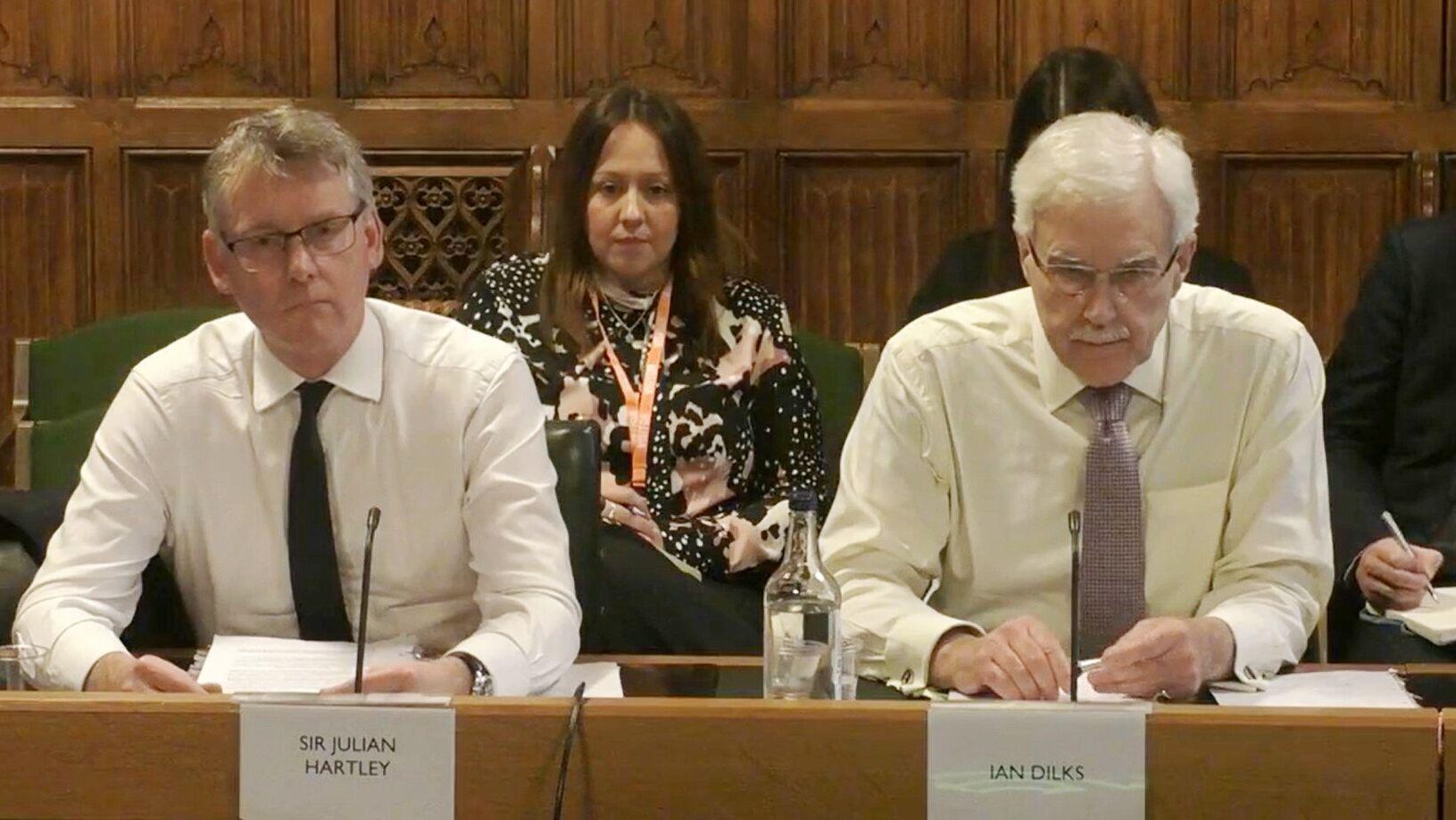Managing Better Care: Rethinking liver care in NHS Tayside
Deficiencies with testing have left many patients with serious undiagnosed liver disease for years on end. Now, a new intelligent testing system developed by NHS Tayside and Dundee University offers hope of earlier diagnosis and treatment.

“The wards are full of liver failure,” says John Dillon, professor of gastroenterology and hepatology at the University of Dundee, who was told not to expect much work when he qualified as a liver doctor 20 years ago. Today, “we’re admitting about 20 patients a week with the consequences of liver disease, for a population of 400,000 people,” he observes.
The UK is facing a ticking time-bomb of alcohol-related and obesity-related liver diseases. In Scotland, around 800 people die from liver disease every year. Men used to present with liver disease in their 60s on average and women in their late 50s, Dillon says. “Now we’re seeing people in their 50s and 40s.”
Significantly, opportunities to detect liver disease and treat people in the early stages are often missed, leading to more cases of cirrhosis, hepatorenal syndrome and more deaths.
Test results ignored
Liver function tests (LFTs) are commonly used blood tests, requested by GPs and in secondary care, which may indicate liver disease. An estimated 20% of LFTs produce abnormal results, but the causes can be complex and confusing and many of the results are incompletely investigated.
It can be unclear whether an initial abnormal LFT signifies current or future liver disease, significant disease in other organs, or a temporary issue of little clinical relevance.
Additional diagnostic tests or screening blood tests may still leave many abnormal LFTs unexplained.
Dillon says case reviews have shown that many patients who are now dying of liver failure had abnormal liver function tests recorded years earlier but “nothing was done about them”.
He adds: “It was these mild abnormalities in LFTs that were being ignored because they didn’t seem very dramatic and this has led to consequences down the line,” he says. Ellie Dow, joint clinical lead for North of Scotland laboratories, agrees that a lot of disease was going undetected and untreated, “if it was being tested for at all”.
Developing intelligent systems
The University of Dundee and NHS Tayside are part of the Academic Health Science Partnership in Tayside which was launched in 2015. Clinicians and lab scientists sought to radically improve the detection of liver disease and ensure earlier treatment to reduce mortality, using advances in technology pioneered at the Blood Sciences Laboratory at Ninewells Hospital, Dundee.
They created new “intelligent” liver function tests (iLFTs), which ensure additional tests are automatically undertaken to investigate suspected liver disorder or abnormal LFT results based on the initial samples from GPs and hospitals.
The new tests allow clinicians to immediately differentiate between alcoholic or non-alcoholic fatty liver disease and rarer diseases such as autoimmune liver diseases, Hepatitis C or metabolic diseases, meaning patients who need immediate assistance receive it faster.
The system combines patient demographics, clinical details and blood test results using advanced computer algorithms. The results are compared with liver disease criteria produced by expert hepatologists and this allows a probable diagnosis, investigation and management plan to be generated.
“Rather than just testing the LFTs we’re interpreting them and adding intelligence to them,” says Dillon. “For most patients there is a set of rules you can come up with which will reliably diagnose patients. So we sought to capture those rules and thoughts in a series of algorithms and outcomes.”
Defining outcomes
A group of hepatologists was effectively “locked in a room with coffee and biscuits” to agree on the rules, he explains, resulting in 32 basic “outcomes” from a set of LFTs. Now, when an iLFT is requested, the GP enters patient data for alcohol consumption, Body Mass Index (BMI) and any features of a metabolic syndrome (diabetes, hypertension, high cholesterol or heart disease).
Samples identified as abnormal go on automatically to have additional tests done, to look for the different causes of liver disease, its severity and how much scarring there is on the liver.
Dillon adds: “The computer system that runs the lab works out which of the 32 outcomes the LFT has and then sends those results, along with the interpretation, back to the GP. It all happens in under four hours.” So, after that first contact with the patient, the GP has “all the information they need” to decide what to do next.
Most patients will have mild alcohol-related liver disease or mild non-alcoholic fatty liver disease and can be treated in primary care with lifestyle advice about moderating alcohol, losing weight and exercising more.
About 15% of patients have more complicated liver disease or significant scarring on their liver and will be referred into hospital. “Rather than doing this at the end of three months and six visits and multiple investigations you’re doing it after one visit,” says Dillon.
Overcoming challenges
The team had to tackle numerous challenges, especially IT ones, but did so largely through minor changes to existing practices and adapting functionality within modern laboratory diagnostics systems.

There were some concerns about the ethics of patients effectively consenting to multiple tests done ‘in one go’, but patients were involved in the project and many became a “powerful voice of advocacy” for it,” he says.
Dow, a consultant in biochemical medicine, says a key challenge for the laboratories was making individual specialties think more as a team. “You have to really step back from the traditional divisions between the labs and think of the overall pathway benefit to the patients,” she says.
Results
Results so far have shown early detection of liver disease is reducing patient risk of premature mortality thanks to immediate treatment and early disease management.
More than 700 patients were enrolled in a pilot study comparing the iLFT with standard care. The iLFT increased detection of liver disease by 43% for patients with abnormal LFT testing, while likelihood of a correct diagnosis rose by from 41% to 93%.
The appropriate escalation of care following an abnormal LFT has more than doubled, and early and more reliable diagnosis for liver patients has reduced the referral rate to secondary care by 75%.
In 2018 and the intelligent tests were made standard practice across NHS Tayside. By June 2019, more than 2,500 patients had been tested with iLFT, with 30% showing abnormal results. In a survey of GPs who have implemented the iLFT, almost half felt it had reduced their workload and 91% said they wanted to continue using it.
Dillon explains that the improvement in overall life expectancy has been modest, because the vast majority of patients don’t have serious disease. “But for the small number that do have serious disease the early detection of that has a big impact on their mortality,” he adds.
“The estimated cost saving to the NHS works out at £3,100 per patient with an abnormal LFT over the lifetime of a patient, because of the avoidance of costs of serious liver disease. The estimated saving to the health board is around £2m over 10 years.”
National roll-out
The Scottish Government has earmarked the scheme, which won several awards in 2019, for roll-out across the country, and NHS Tayside is now working closely with other health boards.
“Talking to my colleagues south of the border where a lot of laboratory services have been privatised and broken away from NHS hospital units, this type of collaboration would be more difficult to organise,” Dillon warns.
Dow says the scheme has helped people to see how laboratories, which are often targeted for financial cutbacks, are “integral” in improving health. “It’s totally changed the way I think about liver function testing and it’s brought us all closer together as different specialties,” she says.
Related News
-

Regulating the managers: more questions than answers
The Labour government’s plans for regulating NHS managers are still shrouded in mystery, and the three options on the table each have their pros and cons. Rhys McKenzie weighs up the choices and gauges the views of MiP members on the best way forward.
-

The inspector falls: why the CQC needs a fresh start
After years of chaos, the Care Quality Commission urgently needs to rebuild trust and credibility with the public and the services it regulates. What needs to change and what are the priorities for new boss Sir Julian Hartley? Alison Moore reports.
-

Voice, value and vision: what analysts need from the NHS
Data analysts play a vital role in an NHS which is increasingly data-driven and focused on public health trends. But the NHS faces fierce competition for skilled analysts and many feel the health service fails to value them or fully use their talents. Alison Moore reports.